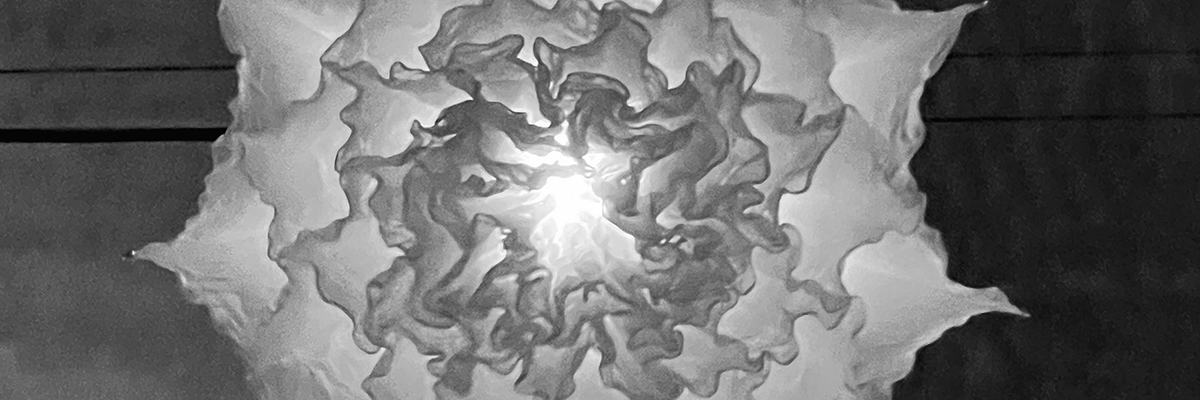In its 10th iteration, the New York City Ballet Art Series continues to deepen and broaden its foundation in the Millenial/Gen Z cultural landscape – this year with a varied program that engages the 20 and 30-somethings with a sincere dedication to reflecting modern culture while respecting the proud heritage of the art form. The Art Series program inaugurated with Brooklyn street art duo Faile a decade ago with great fanfare and some shock for the traditionalists. That relevancy with street culture and a youthful vibe still resonate even as the offerings broaden. Low has always pushed High, as you know, and it was plainly evident Friday night viewing guests and their great variety of fashions and international street flavors – and the drop of pretense in general.

On a cold and grey January Friday night, after a tough week personally, we weren’t even sure if we could leave the apartment and the comfort of cocktails and playlists and pizza or maybe dumplings to celebrate the Lunar New Year. With the promise that art always heals and even has the possibility of transforming you, we headed to Lincoln Center to see the old, the new, and probably the future.
They’ve given up on trying to stop the kids from taking pictures in the grand and sparkling theater, although there are scolding ushers ready to pounce at first sight of a glowing phone screen during the performance. It’s only right since there are about 50 people on the stage vying for your attention after years of preparation – and the glare of a phone in the corner of other people’s periphery is thoughtless. But the varied gauntlet of people in their 20s and 30s in all manner of fashions, skin colors, gait, and body types trouncing up and down the aisles during pauses and intermissions reflected our city today. The trends and the eccentricities on parade were somehow greater than many Manhattan/Brooklyn homogenous rooftop clubs that you’ve seen in recent years, so the NYCB is doing something well to engage with such an audience.
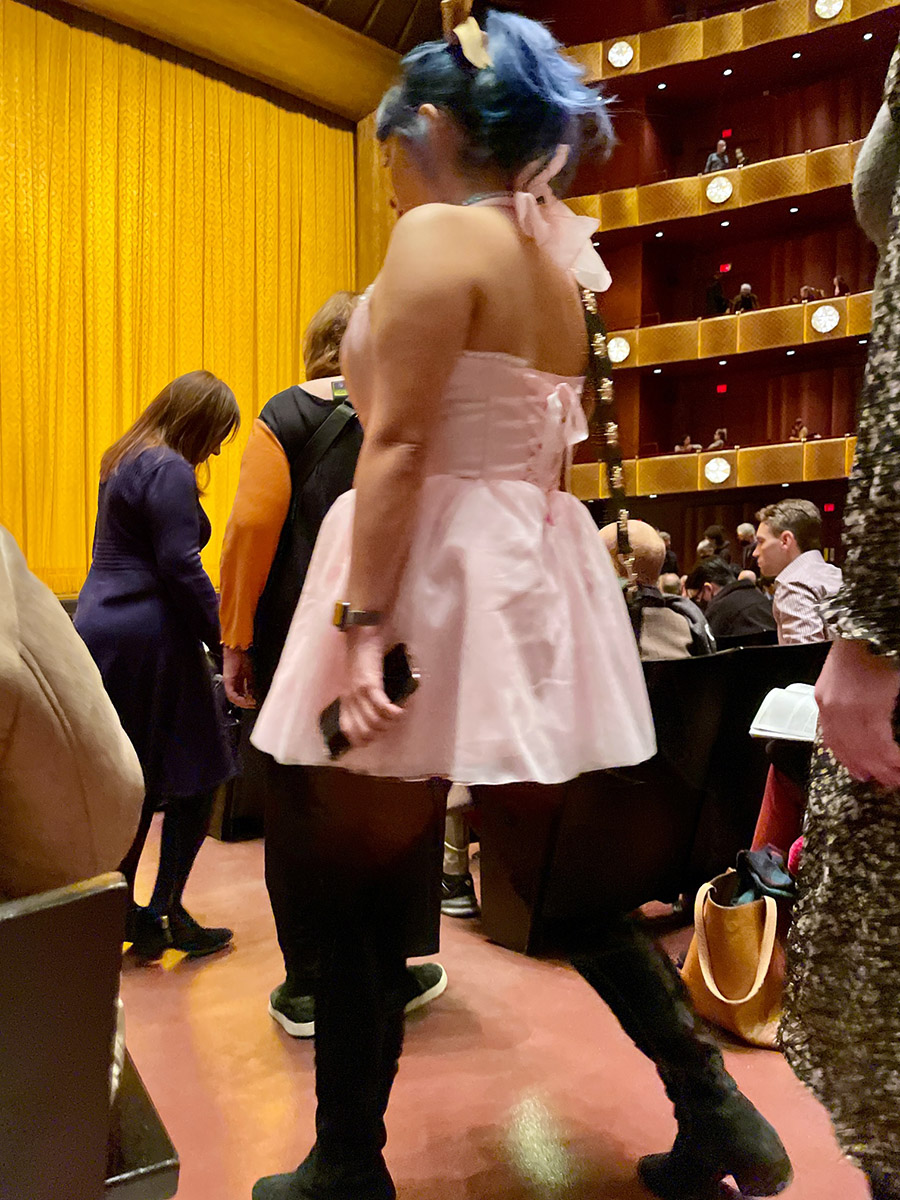
Sure there are the old guard with their annual season passes, and there are a number of red-faced stuffed shirts and power coifs in the offing, but they are just one more costume to add to the New York menagerie around you. The performers on the stage don’t quite reflect the diversity of this audience, but there has been some improvement – a sprinkling of non-white skin tones under the lights. In this respect, the pace of catching up with the new generation is a bit adagio, if you will.
Onstage the traditional elegant played its tale with the futuristic and spare, with curtain calls in between. If you couldn’t find something to love with these ballet dancers and their gorgeous gifts, you are just bitter. The piece de you-know-what of this program that literally startled many was the curtain rising on an actual Marc Chagall the size of the proscenium, or a football field, or your imagination. The darkness lifted the heavy velvet doors to slowly lighten upon the Russian painters’ Firebird without announcement (unless you are one of those people who read the program). There was an audible gasp in the multilayered boxes and across the orchestra seats. Was this an actual Chagall?
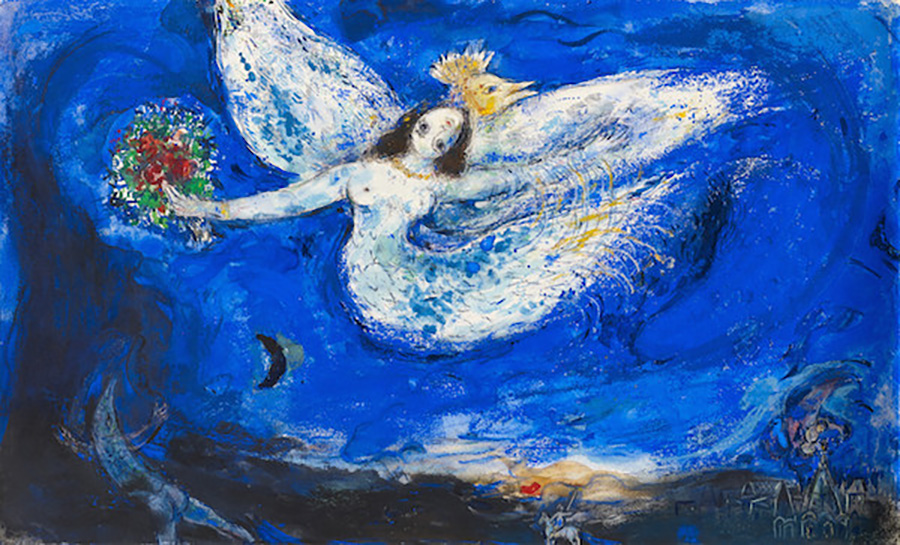
Igor Stravinsky’s The Firebird is more than 110 years old, and this curtain, set, and costume experience debuted in New York’s Metropolitan Opera House in 1945, but clearly, Chagall is timeless in his surreal inventiveness. We’ve legalized pot, and people are now talking about magic mushrooms, and Chagall offers his own fantastical imagery that requires neither to enjoy how untethered one can be to this reality, our constructed one.
He created over 80 costumes, including trippy animals and monsters in thickly rich hues, fabrics, appliqué, and embroidery. The scenes were unveiled with such sweet and creaming dollops that before you knew it, everyone was submerged and swimming in dripping colors, swept along by the diaphanous pageant, the ever-elegant movements and unpredictable treasures buoying this dream. The final scene could easily be from an anime adventure, a metaverse convention, or a CGI-filled cinematic melding of real and conjured. Was this old, or was this leading us into a cosplayed future?
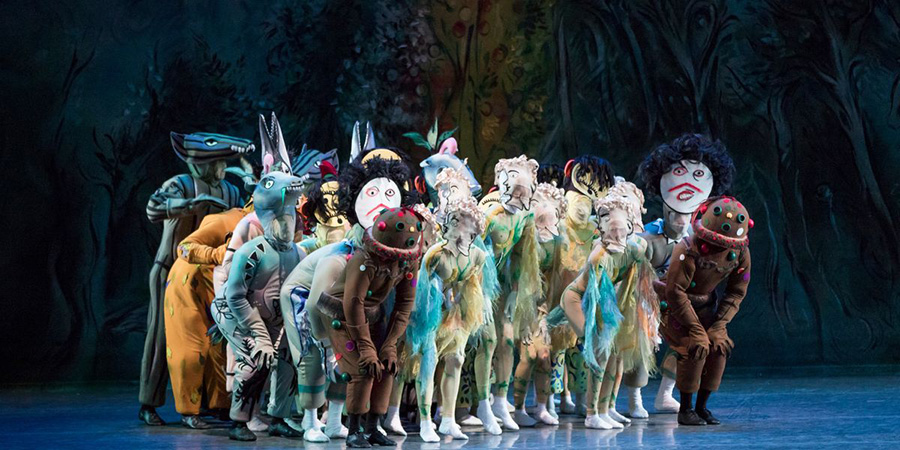
The afterparty played further with perceptions; the ballet audience poured into the Phillip Johnson-designed lobby with open walkways surrounding it multiple stories into the air, anchored by the amorphous lovers, Elie Nadelman’s two nudes. With bourbons and beers in hand, the bobbing light fixtures dabbed down and up from their cages above us like so many sea creatures at organic intervals. At the same time, DJ Gaspar Muniz playfully danced while lording the turntables and flooding the cavernous space with Brazilian, African, Hip-hoppian, and funktastic clouds of color.
Interrupting the DJ’s sonic reverie briefly, NYC Ballet solo pianists Elaine Chelton and Alan Moverman performed Philip Glass’ Les Enfants Terrible: Elizabeth Chooses a Career on facing pianos. They played in a circle of rapt, appreciative attendees who were buffeted by outer layers of the excited cocktail chatter. The rhythmic, almost hypnotic tones helped us ground ourselves while opening an understanding of the Shylights that were plunging and gently bouncing through space just above our heads. The large-scale installation by Artists Lonneke Gordijn and Ralph Nauta of Amsterdam-based art duo called DRIFT permanently altered the sense of reality that had already been dislodged within the theater, and the booze made sure we never did quite connect with the quotidian worries of the week again.
The final act was a burger and french fries at a glaringly bright and bustling New York diner closer to Columbus Circle. Even then, the lemon meringue pie, coconut cream pie, carrot cake, and five-layered chocolate cake beckoned to passersby like the year 1955. From the rotating rack behind the glass, the desserts’ seductive promised sweetness made us drowsy with dreams of monsters and ballerinas.
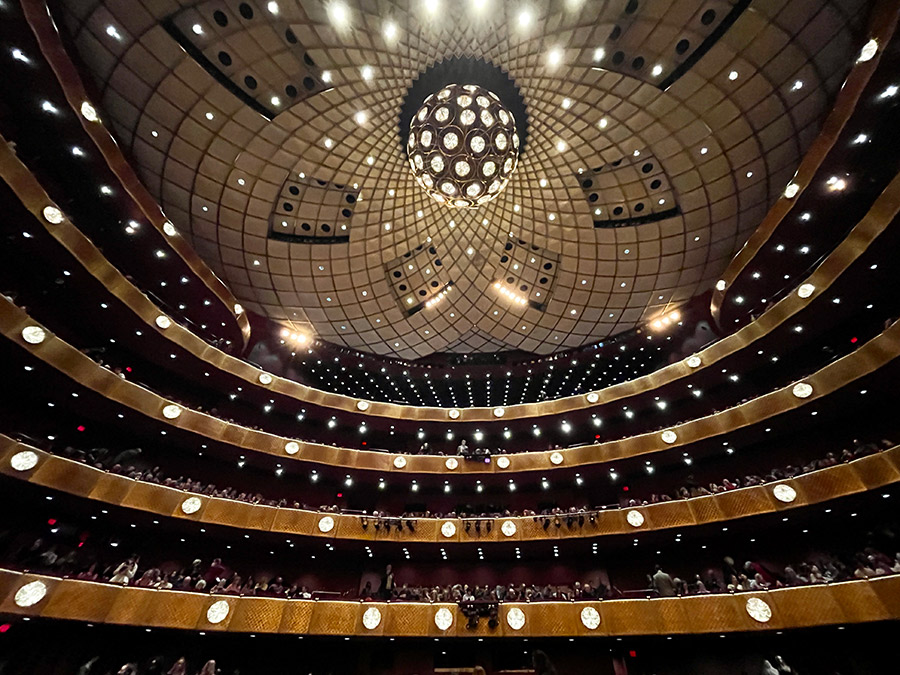
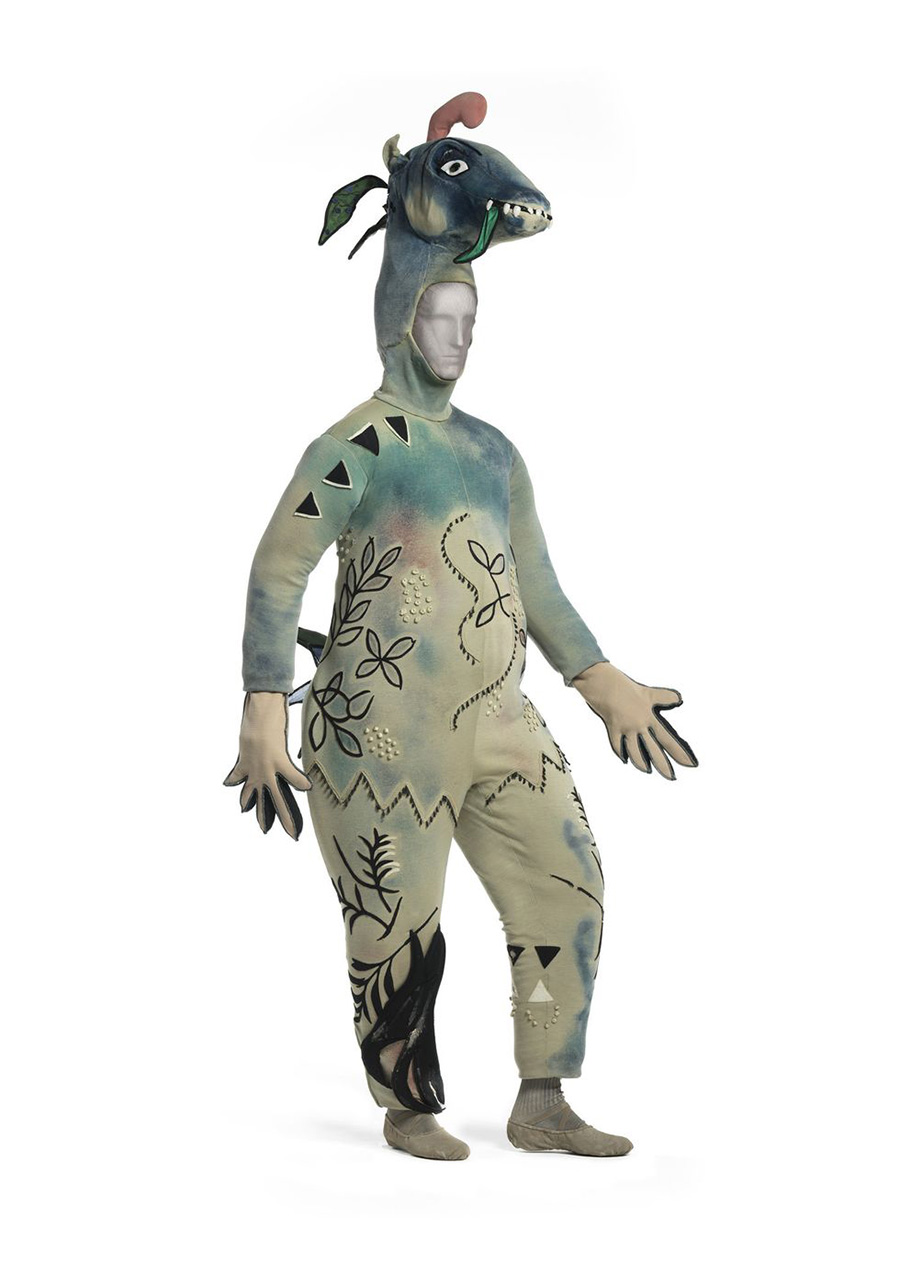
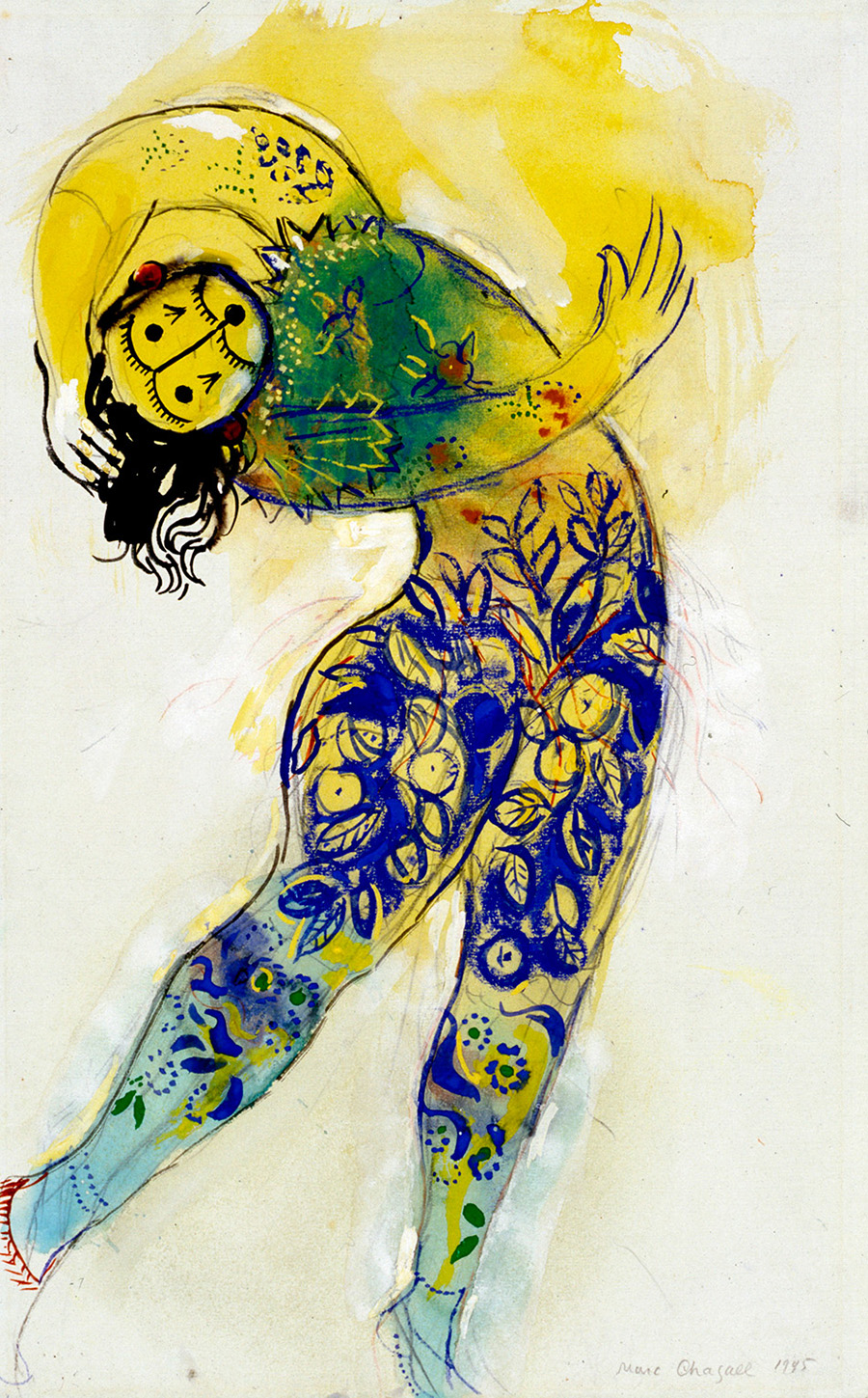
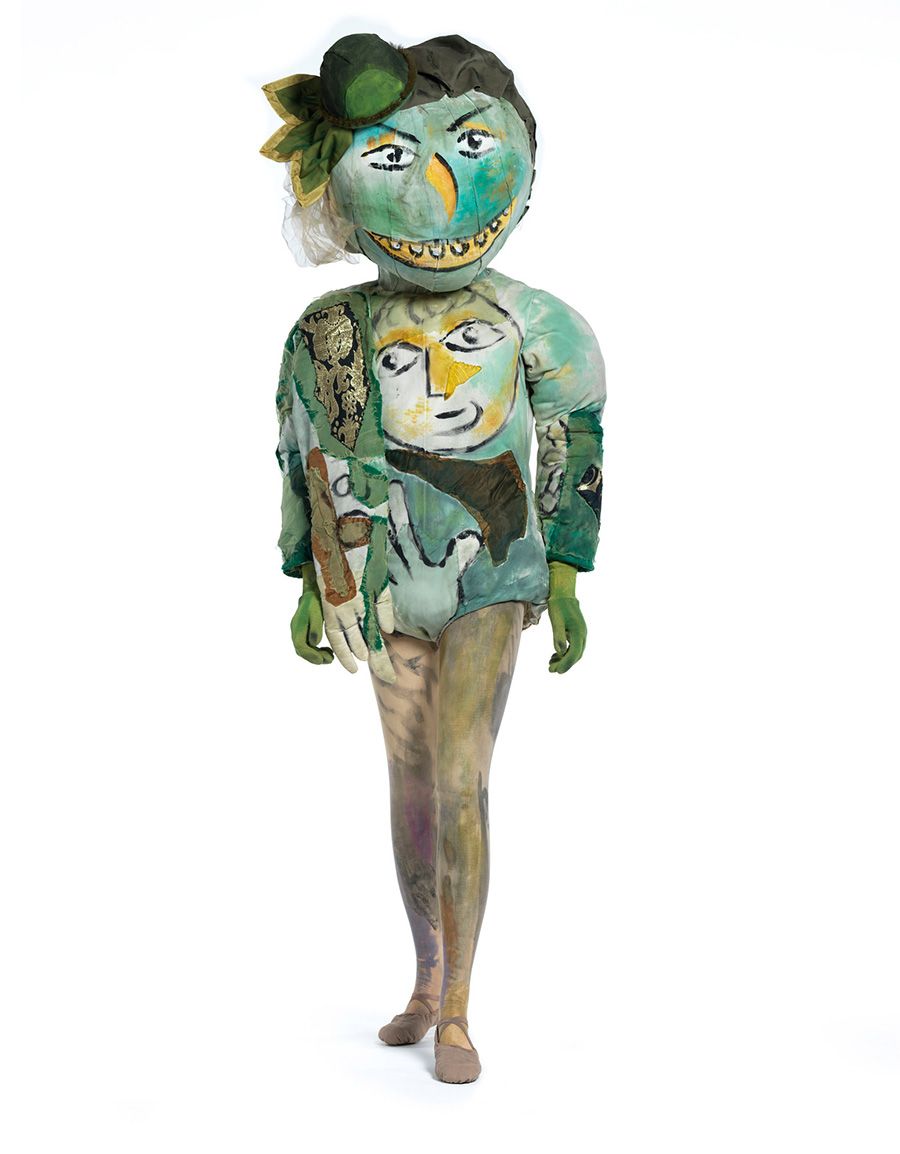
Other Articles You May Like from BSA:
"The Homo Riot opening was a great success," says JB Jones of The Site Unseen, who threw this solo show for one of the rare gay Street Artists who are out of the closet and on the corrugated metal wal...
Our weekly focus on the moving image and art in the streets. And other oddities. Now screening : 1. From Pakistan: The Writing on the Wall 2. "Wrong Weight" Sculpture by Górnicki and Chazme in Łó...
Welcome to BSA Images of the Week. Hope you had a good Thanksgiving, although it is hard to imagine anyone feeling like it was great, considering that we now have long food lines around the c...
A fresh face at Urban Nation, the abstract muralist URKU has just completed the façade across the train tracks from the museum on Bulowstrasse. Urku. One Wall Project. Urban Nation Berlin. Septe...
Up-to-the-moment street art today from Polish artist M-City (Mariusz Waras), who converts the façade of a Gdansk warehouse into a social media primer on how to support the people of Ukraine. Sharing ...
 BROOKLYN STREET ART LOVES YOU MORE EVERY DAY
BROOKLYN STREET ART LOVES YOU MORE EVERY DAY